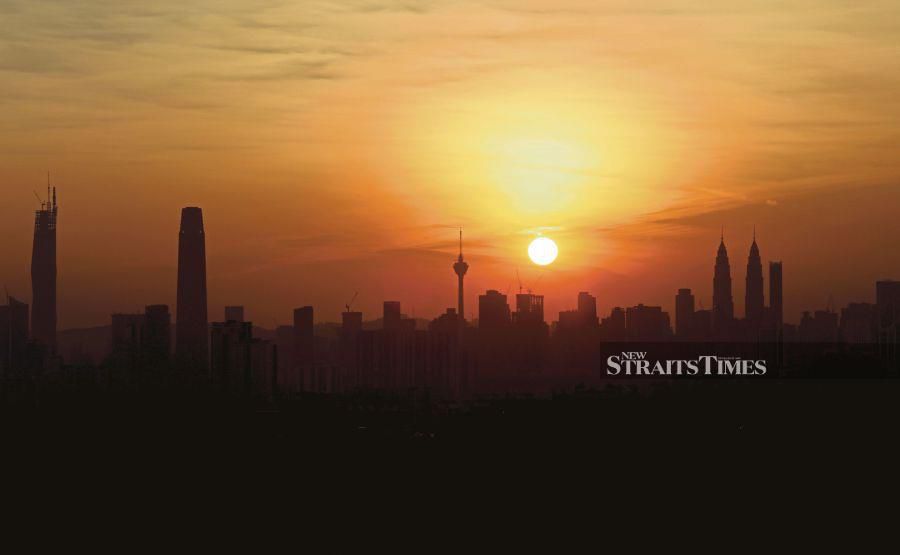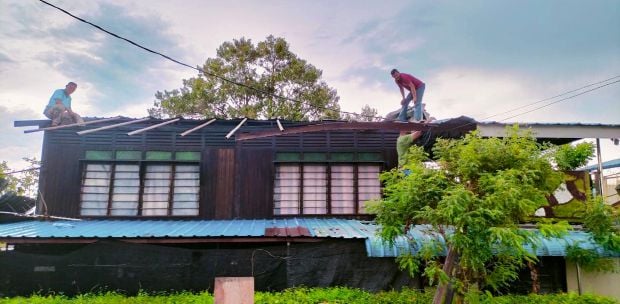Three months ago, the prime minister launched the fourth National Physical Plan (NPP4), in sync with the goals of the 12th Malaysia Plan, to make the country economically, environmentally and socially resilient.
Datuk Seri Ismail Sabri Yaakob also announced the Malaysia Livability Index to serve as the authorities' urban planning checkbox so that goals and targets set for development are met.
"Having a plan and an index in place not only reflects the country's global commitment to sustainable development, but will also be the coordinating instrument between the federal and state governments."
NPP4 sets out three core developments, 11 strategic directions and 39 actions to guarantee the people's wellbeing.
The essence of "sustainable development" is not just economic development and environmental integrity, but, more importantly, social wellbeing.
NPP4 is, therefore, on the right track, in line with the 17 Sustainable Development Goals (SDGs). The 11th SDG is "sustainable cities and communities".
Ismail Sabri said the Livability Index will ensure that issues, such as last-mile connectivity, Internet facilities and access to public facilities, are looked into in development or urban planning.
Echoing Ismail Sabri's hopes and aspirations, Housing and Local Government Minister Datuk Seri Reezal Merican Naina Merican said current and future urban planning agenda must be "pandemic-resilient".
He added that in the post-pandemic era, the element of "urban resilience", especially in matters of housing and public spaces, must be made a priority.
He said his ministry would "prioritise the Livable Malaysia agenda so that people could experience sustainable development and conducive living conditions."
He added that "people's housing agenda will also be a priority, with housing programmes for the low-income group to continue with the RM1.5 billion allocation under the 2022 Budget".
Planning expert Professor Raquel Rolnik has an alternative name for "affordable housing" as one of the critical elements for a livable city: "housing justice".
I think the term is more appropriate now because the concern is no longer affordability to buy, but affordability to rent.
She said the Covid-19 pandemic can be regarded as a "a fork in road", giving us two options: continue along the same road as before, or depart from existing planning theory and practice by taking the new road, which offers new challenges in the fundamentals of planning.
She said the pandemic offers planning a chance "to move beyond the stifling paradigms that have dominated the field for so long without producing the kind of communities many people desire".
I conducted a workshop on land governance and land use planning last week, and the discussions include the subject of livable cities.
I told the participants that Singapore has been described as "the most livable city in Asia", because it was able to meet seven criteria: green areas, protection against flooding, security against crime, affordable housing, clean air, mobility and employment opportunities.
In view of last December's massive flooding in many urban locations, can our cities be considered livable?
For Mick Lennon, from the University College, Dublin, the pandemic "has left society dazed and confused", leading to a spate of research in planning, which focused, inter alia, on "how disruption had amplified inequities", urban environmental quality and enhanced demand for public space.
He added that the pandemic had also increased interest in public health, measures to "better proof our cities" from future contagions, and how our cities "should evolve" in the future.
For centuries, cities have been conceived as "places of opportunity"; people converge on cities for employment and other economic opportunities.
The lockdowns changed the landscape.
People no longer come to cities to work or engage in business transactions. The pandemic and technology had resulted in a new norm.
Lennon said these "two cardinal poles of home and work" have dictated how people flow around and use urban spaces.
It is this spatial relationship embedded in the daily patterns of life that help create cities and communities.
The pandemic had given rise to remote working. Will cities (as places of work and business) be still relevant in the post-pandemic era?
All over the world, people are moving from survival to revival.
Is it not time for us to build a post-pandemic plan for our cities and communities?
The writer was a federal counsel at the Attorney-General's Chambers and visiting professor at Universiti Teknologi Malaysia. He is now a full-time consultant, trainer and author
The views expressed in this article are the author's own and do not necessarily reflect those of the New Straits Times






